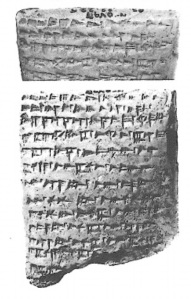 There’s a new Legend of Zelda game out next week. Those of you who don’t follow video games may wonder why that’s a big deal. The short answer is that the Zelda games are generally excellent and that, in an industry where publishers often pump out new iterations to major franchises at a rate of one or more a year, the last main Zelda game came out six years ago. I’m not going to write here about what makes the Zelda games so good – many others have done that much better than I could (this is a good account of the origins of the series, and these YouTube videos are an excellent exploration of its design choices). Instead I want to talk a bit about how the series uses time, history and myth. Continue reading
There’s a new Legend of Zelda game out next week. Those of you who don’t follow video games may wonder why that’s a big deal. The short answer is that the Zelda games are generally excellent and that, in an industry where publishers often pump out new iterations to major franchises at a rate of one or more a year, the last main Zelda game came out six years ago. I’m not going to write here about what makes the Zelda games so good – many others have done that much better than I could (this is a good account of the origins of the series, and these YouTube videos are an excellent exploration of its design choices). Instead I want to talk a bit about how the series uses time, history and myth. Continue reading
Month: February 2017
Under-Appreciated Monsters of the Ancient World #1 – The Sucker

KTU 1.96. From Del Olmo Lete 2010
Everyone knows the Minotaur or the Cyclops, or the various strange creatures of ancient Egypt. In this occasional series I’m going to shine the spotlight on some of the other mythological nasties of antiquity, who are just as cool in their own ways but don’t get nearly enough love.
Today, The Sucker, or ‘Old Big-Eye’.
Cyclades
I know I’ve been a bit quiet on here lately, but I haven’t forgotten about Ancient Worlds. Things have just been busy with work, but I have a few ideas for posts and hopefully I’ll get something up soon.
In the meantime, I just wanted to point you towards my friend Anna’s review of Cyclades, a strategy board game set in the ancient Aegean, since its mix of Greek colonisation and mythological monsters is right up this blog’s street. I was part of the group playing it today and I second her opinion of its goodness. Unfortunately, I was far from good at playing it. Maybe next time…

How to make a cylinder seal
I’ve been making cylinder seals lately. Here’s a thing I wrote for the CREWS Project blog about how to do it and some of the background.
Enjoy!
In the ancient world, if you wanted to sign something you used a seal. They came in various shapes and sizes – stamps, seals, signet rings – but the general idea was always the same: you had a small object that you could press into clay or wax to mark it with a design unique to you – just like a signature. This could be used in various ways. In the Near East, for example, legal decisions or transactions might be recorded on a tablet, and then all the witnesses would press their seals into the clay next to their names. In other cases it could function as an official lock – a door or container-lid could have a blob of clay pressed over the join and this would be marked with an official’s seal. If the clay was broken – or if it had been replaced with one without…
View original post 1,118 more words